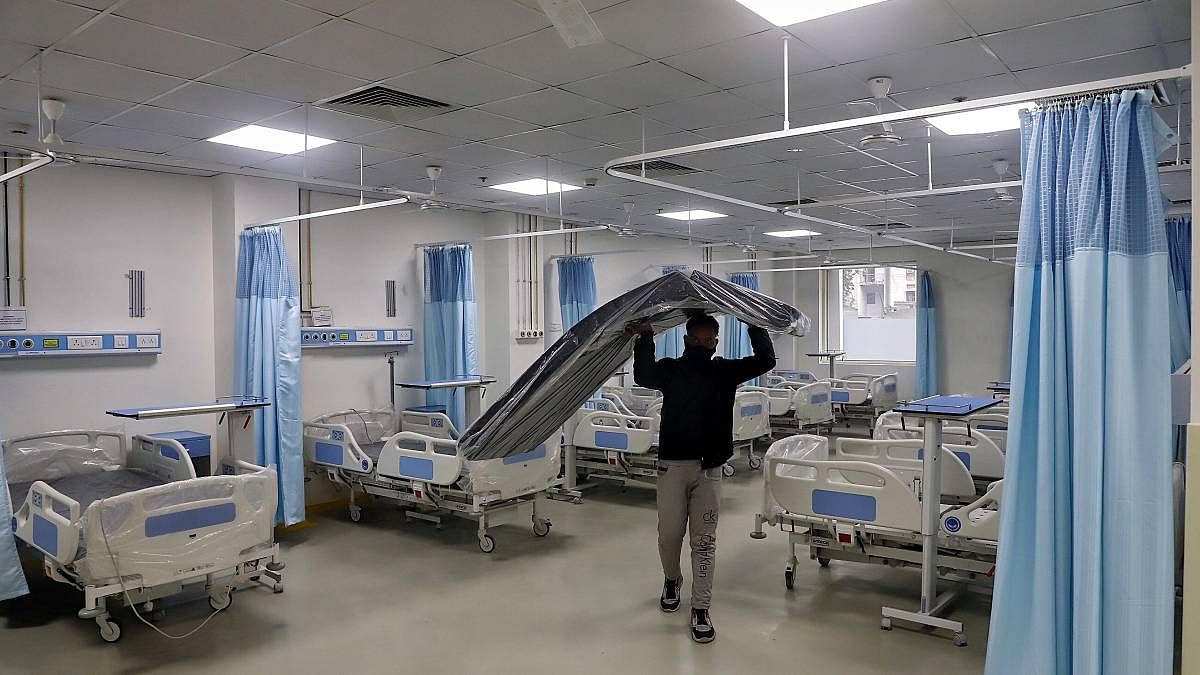New Delhi: Small and Medium Enterprise (SME) hospitals in India deliver 60 percent of healthcare services and account for over 90 percent of hospital beds, but face financial and workforce constraints, infrastructure gaps and competition from premium chains and specialised clinics. This was highlighted in a report titled ‘Hospitals for Bharat’ by LoEstro Advisors, an investment banking and consulting firm, in collaboration with healthcare consultancy firm Medium Healthcare.
SME hospitals are classified as healthcare facilities with a capacity of less than 200 beds.
According to the report, these hospitals, driven primarily by private ownership, dominate the market and command a 69 percent revenue share. They are also growing at a compound annual growth rate (CAGR) of 12.9 percent, surpassing the overall hospital market’s growth rate of 11.3 percent.
“Many of these hospitals actually provide primary health services at the grassroots, hence are a crucial block in the healthcare delivery. Without them, I think our healthcare system will collapse and healthcare delivery would be a problem,” Dr Alexander Thomas, President of the Association of Healthcare Providers India, told ThePrint.
The report notes that despite their growth and vital contribution to healthcare delivery, SME hospitals face mounting pressures, including financial crunch and dearth of staff.
Larger hospital chains are outspending SME hospitals on marketing, investing Rs 4,22,000 per bed in FY24, compared to just Rs 10,000 per bed by SMEs, according to the report.
Utilising traditional and digital platforms, large hospital chains dominate patient acquisition, while SMEs, with minimal marketing efforts, struggle with visibility and engagement, it says.
Patient dissatisfaction due to longer wait times, staff behaviour issues and poor facility management further compounds challenges for SME hospitals.
A physician-driven approach often neglects emotional and behavioural factors in patient care. Additionally, with only two percent of SME hospitals holding accreditation from the National Accreditation Board for Hospitals & Healthcare Providers, many patients prefer accredited facilities, the report points out.
Ratan Jalan, Managing Director at Medium Healthcare, said: “The squeeze on SME hospitals from both premium chains and specialised clinics isn’t just a business challenge—it’s a brewing healthcare access crisis. As large chains focus on metropolitan areas, SME hospitals remain crucial for delivering affordable care to millions of Indians who need quality healthcare in close proximity.”
Rakesh Gupta, managing partner at LoEstro Advisors, also termed SME hospitals as the “unsung heroes of Indian healthcare, especially in tier 2 and 3 cities”.
“Yet, they operate with 40 percent lower revenue per bed compared to large chains while managing longer patient stays and higher operational costs. Our report is an endeavour to help these hospitals survive and thrive through the challenges by providing practical advice,” he said.
Also Read: Budget failed healthcare—should’ve boosted private hospitals in PMJAY with tax incentives
Need to leverage technology
The report highlights that high-income patients increasingly seek premium services from large hospital chains, while middle-income groups prioritise a balance of cost and quality, opting for local clinics or specialists.
Low-income groups, reliant on government schemes, prefer SME hospitals, but often delay non-urgent treatments. These changes emphasise the need for SMEs to adapt to evolving demands and address challenges related to patient retention and financial sustainability.
“Despite the challenges, SME hospitals have significant potential, if they leverage technology and not view it as a competitor, but as an enabler to enhance their services,” said Thomas.
“During COVID-19, many SME hospitals implemented remotely-controlled intensive care units, which I expected to become a major trend post-pandemic. However, this approach has not yet fully taken off, partly due to the insecurity felt by many small hospital owners,” he added.
He mentioned how several SME hospitals have successfully integrated telemedicine and other technologies to improve care quality and provide access to senior clinicians.
Among the solutions the report suggests are establishment of specialised units and optimisation of pricing strategies to enhance profitability. It recommends adopting group purchasing to reduce costs and investing in targeted staff training to improve skills. Securing accreditation can also help.
Thomas noted that while SME hospitals don’t aim to make large profits—only around 4-5 percent—the current reimbursement rates from government schemes were insufficient, often falling below the actual costs incurred. This financial imbalance, he said, was a key factor contributing to the closure of many smaller hospitals.
Thomas suggested collaboration between smaller and larger hospitals which would help the former leverage the expertise, telemedicine, and technology of larger hospitals without the burden of hiring expensive specialists, creating a more sustainable model.
(Edited by Nida Fatima Siddiqui)
Also Read: No central law in pipeline for protection of healthcare personnel, says health ministry

